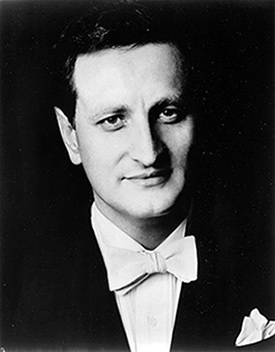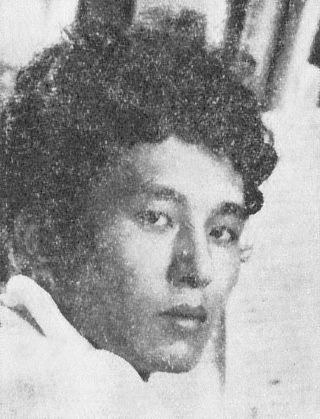Related Research Articles
Overture is a music instrumental introduction to a ballet, opera, or oratorio in the 17th century. During the early Romantic era, composers such as Beethoven and Mendelssohn composed overtures which were independent, self-existing, instrumental, programmatic works that foreshadowed genres such as the symphonic poem. These were "at first undoubtedly intended to be played at the head of a programme".
The trio sonata is a genre, typically consisting of several movements, with two melody instruments and basso continuo. It originated in the early 17th century and was a favorite chamber ensemble combination in the Baroque era.
20th-century classical music is art music that was written between the years 1901 and 2000, inclusive. Musical style diverged during the 20th century as it never had previously, so this century was without a dominant style. Modernism, impressionism, and post-romanticism can all be traced to the decades before the turn of the 20th century, but can be included because they evolved beyond the musical boundaries of the 19th-century styles that were part of the earlier common practice period. Neoclassicism and expressionism came mostly after 1900. Minimalism started much later in the century and can be seen as a change from the modern to postmodern era, although some date postmodernism from as early as about 1930. Aleatory, atonality, serialism, musique concrète, electronic music, and concept music were all developed during the century. Jazz and ethnic folk music became important influences on many composers during this century.

Eduardo Mata was a Mexican conductor and composer.
In Western classical music, neoromanticism is a return to the emotional expression associated with nineteenth-century Romanticism. Throughout the 20th and into the 21st century, numerous composers have created works which rejected or ignored emerging styles such as Modernism and Postmodernism.

Maestro is an honorific title of respect, sometimes abbreviated Mo. The term is most commonly used in the context of Western classical music and opera, in line with the ubiquitous use of Italian musical terms.
Dieter Schnebel was a German composer, theologian and musicologist. He composed orchestral music, chamber music, vocal music and stage works. From 1976 until his retirement in 1995, Schnebel served as professor of experimental music at the Hochschule der Künste, Berlin.
French classical music began with the sacred music of the Roman Catholic Church, with written records predating the reign of Charlemagne. It includes all of the major genres of sacred and secular, instrumental and vocal music. French classical styles often have an identifiably national character, ranging from the clarity and precision of the music of the late Renaissance music to the sensitive and emotional Impressionistic styles of the early 20th century. Important French composers include Pérotin, Machaut, Du Fay, Ockeghem, Josquin, Lully, Charpentier, Couperin, Rameau, Leclair, Grétry, Méhul, Auber, Berlioz, Alkan, Gounod, Offenbach, Franck, Lalo, Saint-Saëns, Delibes, Bizet, Chabrier, Massenet, Widor, Fauré, d'Indy, Chausson, Debussy, Dukas, Vierne, Duruflé, Satie, Roussel, Hahn, Ravel, Honegger, Milhaud, Poulenc, Auric, Messiaen, Françaix, Dupré, Dutilleux, Xenakis, Boulez, Guillou, Grisey, and Murail.
Jakob van Domselaer was a Dutch composer.
Tannhäuser is an 1845 opera in three acts, with music and text by Richard Wagner. It is based on two German legends: Tannhäuser, the mythologized medieval German Minnesänger and poet, and the tale of the Wartburg Song Contest. The story centres on the struggle between sacred and profane love, as well as redemption through love, a theme running through most of Wagner's work.
Anton Fils, 22 September 1733 (baptized) – 14 March 1760 (buried) was a German classical composer.

Barney Sanford Childs was an American composer and teacher. Born in Spokane, Washington, he taught and composed avant-garde music and literature at universities in the United States and United Kingdom.

Toshiro Mayuzumi was a Japanese composer known for his implementation of avant-garde instrumentation alongside traditional Japanese musical techniques. His works drew inspiration from a variety of sources ranging from jazz to Balinese music, and he was considered a pioneer in the realm of musique concrète and electronic music, being the first artist in his country to explore these techniques. Over the span of his career, he has written symphonies, ballets, operas, and film scores. Mayuzumi was the recipient of an Otaka prize by the NHK Symphony Orchestra and the Purple Medal of Merit.

Sonatas and Interludes is a cycle of twenty pieces for prepared piano by American avant-garde composer John Cage (1912–1992). It was composed in 1946–48, shortly after Cage's introduction to Indian philosophy and the teachings of art historian Ananda K. Coomaraswamy, both of which became major influences on the composer's later work. Significantly more complex than his other works for prepared piano, Sonatas and Interludes is generally recognized as one of Cage's finest achievements.
Portato, also mezzo-staccato, French notes portées, in music denotes a smooth, pulsing articulation and is often notated by adding dots under slur markings.
The 1360s in music involved some significant events.
Makoto Moroi was a Japanese composer.
Quintuple meter or quintuple time is a musical meter characterized by five beats in a measure.
The 1380s in music involved some significant events.
References
- 1 2 Kennedy 2006.
- ↑ Pritchett and Kuhn 2001.
- ↑ Anon. 1956.
- ↑ Terry 1976, 44.
- ↑ Kanazawa 2001.
Works cited
- Anon. 1956. "Third Programme Anniversary: Music Commissioned for the Occasion". The Times, issue 53570 (Friday, Jun 29 June): 11, col C.
- Kanazawa, Masakata. 2001. "Mayuzumi, Toshirō". The New Grove Dictionary of Music and Musicians, second edition, edited by Stanley Sadie and John Tyrrell. London: Macmillan Publishers.
- Kennedy, Michael. 2006. "Bacchanale". The Oxford Dictionary of Music, second edition, revised, Joyce Bourne, associate editor. Oxford and New York: Oxford University Press. ISBN 0198614594.
- Pritchett, James, and Laura Kuhn. 2001. "Cage, John". The New Grove Dictionary of Music and Musicians, second edition, edited by Stanley Sadie and John Tyrrell. London: Macmillan Publishers.
- Terry, Walter. 1976. Ballet Guide. [ full citation needed ]
- Vangelis. 1975. Bacchanale. Heaven and Hell (Vangelis album) [ full citation needed ]